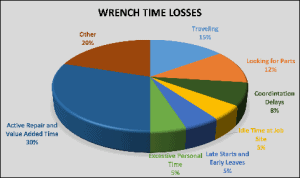
FEA and Reliability
Abstract
Andre and Fred discussing finite element analysis and how it may be useful for reliability engineering professionals.
ᐅ Play Episode
Your Reliability Engineering Professional Development Site

Andre and Fred discussing finite element analysis and how it may be useful for reliability engineering professionals.
ᐅ Play Episode
by Fred Schenkelberg 2 Comments

Every failure has valuable information you and your team require to improve reliability. During the development process, each failure may represent a future recall. Celebrate every failure. Let your FRACAS prioritize which failures to resolve.
[Read more…]
by James Kovacevic Leave a Comment

In today’s episode, the guest Fred Schenkelberg explains the Monte Carlo simulation in a fair amount of detail. Before you get in the depth of how the tool works, you need to understand what basically this method is. The Monte Carlo simulation has been around since World War 2 and it is a mathematical technique that works based on probability functions, random variables, and the distribution of statistical data. The main concept of it to give the decision maker the most obvious choices while facing any risks to get the best out of every possible outcome. The tool serves the purpose for getting a better insight of the consequences relative to each choice the person making decisions has to make. When you’re looking for the reliability of your assets and checking the integrity of your different maintenance programs, it is a really powerful tool.
ᐅ Play Episode
by Carl S. Carlson Leave a Comment

Carl and Fred discussing the need to integrate Design for Reliablity activities throughout the entire organization.
ᐅ Play Episode
by Carl S. Carlson Leave a Comment

Carl and Fred discussing the reliability tool called “Root Cause Analysis,” and how RCA can be used in reliability programs.
ᐅ Play Episode
by James Kovacevic Leave a Comment

In this episode, the guest Paul Crocker tells his inspiring Maintenance and Reliability Engineering journey. He is an Uptime award holder in the innovative use of photography for maintenance in the Kansas City. He has been taking pictures of every equipment in the workshops, in the field, and everywhere he can. These pictures have worked like a living notebook for him—just a much better to look at, kind of. He suggests it to his coworkers and trains people to do the same as pictures of issues that an engineer faces in routine, failure data and equipment information can be pretty useful sometimes.
ᐅ Play Episode

Kirk and Fred discussing the difficulty of getting the failed products, especially low cost systems, back from the field to do failure analysis on.
ᐅ Play Episode

Kirk and Fred discussing what Reliability Engineers do considering the past and current approaches to reliability development
ᐅ Play Episode
by Tim Rodgers Leave a Comment

Fred interviews Ann Marie an author and consultant concerning her work in the field of software reliability.
by James Kovacevic Leave a Comment

Implementing Parts Kitting is challenging as doing so requires numerous systems, processes, and people to work together. This paper describes appropriate steps for successful implementation of Parts Kitting in a sustainable manner and outlines pitfalls to avoid.
At an average facility, maintenance staff wrench time is approximately 30% (Figure 1). That means that they only spent this amount of their time performing repairs and Preventative Maintenance or other value added work. The rest of the time is lost for a variety of reasons. Businesses work to address this lack in efficiency by implementing a maintenance planning & scheduling functions. When properly implemented, many realize the benefits in craft efficiency. However, improper implementation of these planning and scheduling functions leads to minimal or no improvement in work productivity. One of the main reasons for this lack of improvement is the time the craft spend traveling & looking for parts.
ᐅ Play Episode

James and Fred discussing the ongoing task to have the right parts available at the right time.
ᐅ Play Episode

Andre and Fred discussing the language of variation and why you need to speak this language as a reliability engineer.
ᐅ Play Episode
by James Kovacevic Leave a Comment

This episode of the weekly podcast is focused on the 2016 SMRP conference and is described in detail by one of the Board members of the SMRP itself, the education director Christopher Mears. Society for Maintenance and Reliability Professionals is a shared group where you get many opportunities to learn, experience, and improve your working skills for your own and your organization’s benefit. They have an annual event in October called the SMRP conference where professionals from around gather and get a know-how about the best practices that many good quality CMRPs use in different industries. It is shared event in which many companies exhibit in workshops which technologies they are using right now. What have they come across while dealing with the reliability improvements and what are they up to—not the specific details like confidential designs, documents, and charts. But kind of keynotes that are food for thought if you are keen to make yourself better in the race of reliability professionals. Apart from this yearly event, you can find the webinars of SMRP members on the official site along with the presentations of different professionals that are working in the leading organizations of the field. The exhibitors of this society are very successful at what they do and if you want to start your reliability engineering journey—doesn’t matter if you’re a student, earlier in the career, or an experienced professional—there’s plenty for you to do in the workshops along with a chance to see the best facilities of the city in which the conferences are held.
ᐅ Play Episode

Andre and Fred discussing the common reliability test which is more than just tossing a few units into an oven.
ᐅ Play Episode

Kirk and Fred discussing the increased expectations of reliability based on experience with past products
ᐅ Play Episode
 Ask a question or send along a comment.
Please login to view and use the contact form.
Ask a question or send along a comment.
Please login to view and use the contact form.